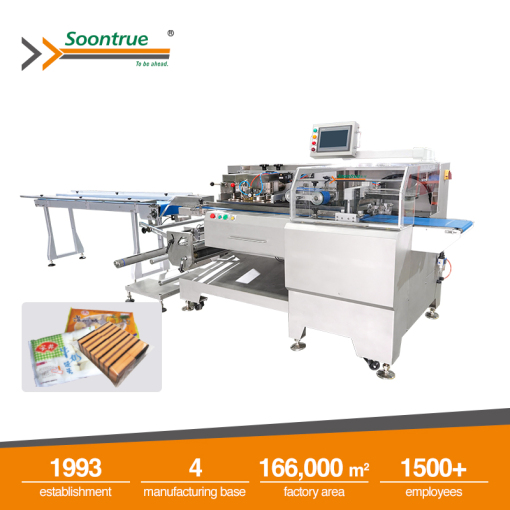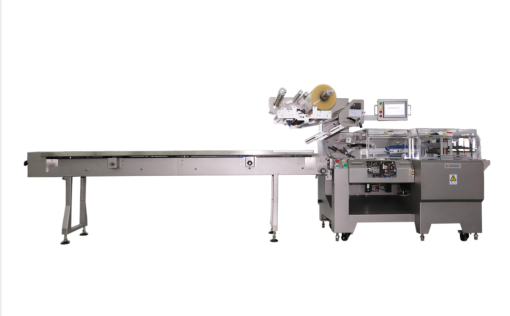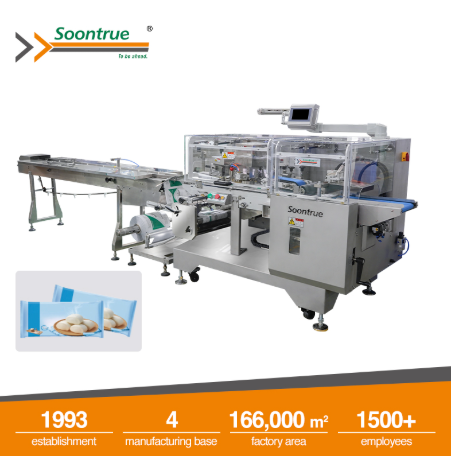Latest Trends in Box Motion Flow Packing Technology for 2025
In 2025, the packaging industry continues to evolve rapidly with increasing demands for sustainability, efficiency, precision, and flexibility. Among various packaging technologies, box motion flow packing machines (also called box motion flow wrappers) are gaining attention for their ability to deliver strong seals, consistent quality, and high adaptability. This article explores the latest trends in box motion flow packing technology, highlighting how manufacturers are responding to changing market demands and material innovations.
Understanding Box Motion Flow Packing Machines
A box motion flow packing machine is a type of horizontal flow wrapper where the sealing head moves in sync with the product during sealing. This allows longer dwell time, producing stronger and more consistent seals, which is particularly beneficial for:
- Tall, large, or irregularly shaped products
- Thick, multi-layered, or barrier films
- Production lines demanding both high speed and seal integrity
This technology is especially popular in the food, pharmaceutical, and consumer goods sectors, where both product protection and aesthetic appearance are critical.
Key Trends in Box Motion Flow Packing Technology for 2025
1. Sustainable and Recyclable Packaging Materials
Sustainability is a central concern for 2025. Manufacturers are increasingly adopting recyclable, compostable, or low-impact films, including mono-material and bio-based films.
- These films require precise temperature control and adjustable dwell times.
- Box motion flow packing machines must handle these materials efficiently while maintaining seal strength and reducing film waste.
2. Automation and Digital Integration
Automation continues to drive innovation in flow packing. Modern machines are equipped with:
- Servo-driven components for precise film feeding and sealing
- Touch-screen HMIs for recipe memory and fast changeovers
- Sensors and vision systems to monitor seal quality, film tension, and product alignment
These features reduce operator dependency and ensure consistent packaging quality at high speeds.
3. Flexibility and Modular Design
Manufacturers are demanding flexible and modular machines capable of:
- Different sealing heads for top or bottom sealing
- Quick-change film loading
- Handling various product sizes and bundle formats
Machines with modular design allow businesses to adapt quickly to new products or packaging materials, maximizing line efficiency.
4. Hygiene, Safety, and Regulatory Compliance
For industries like food, pharmaceuticals, and medical devices, hygienic machine design is non-negotiable. Key features include:
- Stainless steel frames and easy-to-clean surfaces
- Minimal crevices to prevent contamination
- Consistent and strong seals to extend shelf life and ensure product safety
5. Higher Throughput with Quality Maintenance
Producers increasingly demand machines that maintain seal integrity while achieving higher throughput. Innovations include:
- Optimized sealing head design
- Precise motion synchronization
- Advanced film feed control
These allow manufacturers to increase production rates without compromising quality, essential for competitive operations.
6. Smart Packaging Integration
With the rise of intelligent packaging, machines need to accommodate:
- QR/RFID tags
- Data logging of temperature and humidity
- In-line labeling systems
Box motion flow packing machines must integrate these components seamlessly, avoiding speed reduction or seal defects.
7. Cost of Ownership and Energy Efficiency
Companies now consider total cost of ownership (TCO), including:
- Energy consumption
- Film waste reduction
- Downtime
- Maintenance costs
Machines with efficient servo or inverter drives, optimized film usage, and quick changeovers help reduce operational expenses while maintaining high output.
8. Regulatory and Environmental Pressures
Increasing government regulations and global sustainability initiatives impact film selection and machine operation. Compliance with EPR regulations, plastic bans, and food safety standards is critical.
Challenges in Adopting Box Motion Flow Packing Machines
Despite advantages, companies must consider:
- Initial Investment: High-quality box motion flow wrappers with servo drives and wide film compatibility can have significant upfront costs.
- Film Compatibility: Barrier or laminated films require careful calibration of temperature, pressure, and dwell time.
- Maintenance and Operator Training: Advanced machines need skilled personnel and preventive maintenance plans.
- Integration and Space Requirements: Larger machines or wider film setups may require line redesigns.
How Leading Manufacturers Are Responding
Modern box motion flow packing machines incorporate:
- Servo-driven infeed and sealing for consistent output
- Flexible modular components for various product sizes
- Touch-screen HMIs with recipe memory for faster changeovers
- Hygienic stainless steel design to meet regulatory compliance
Why Soontrue Stands Out
Soontrue has over 30 years of experience in flow packing machinery and is leading innovations in box motion technology. Their machines feature:
- Strong and reliable sealing heads for multi-layered and barrier films
- Hygienic stainless steel construction for food and pharmaceutical compliance
- Flexible film feeding and servo automation, improving production efficiency
- Global support network, ensuring after-sales service and spare parts availability
By aligning with 2025 trends, Soontrue helps manufacturers achieve higher throughput, sustainability, and packaging quality simultaneously.
Conclusion
The box motion flow packing sector in 2025 is defined by sustainability, automation, flexibility, and consistent seal quality. Businesses that adopt machines capable of handling diverse films, maintaining strong seals, and integrating with smart packaging solutions will remain competitive.
Companies like Soontrue provide solutions that meet these evolving demands, offering robust, flexible, and efficient machines that align with modern manufacturing and packaging standards.





